The Man I Married [aka I Married a Nazi] (1940)
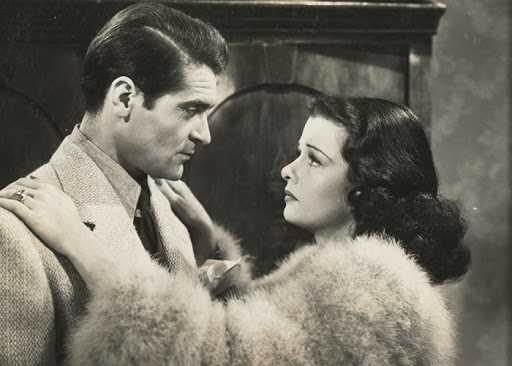
Toronto Film Society presented The Man I Married [I Married a Nazi] (1940) on Sunday, February 5, 1989 in a double bill with Cast a Dark Shadow as part of the Season 41 Sunday Afternoon Film Buffs Series “B”, Programme 5.
Production Company: 20th Century Fox. Director: Irving Pichel. Producer: Darryl F. Zanuck. Screenplay: Oliver H.P. Garrett, based on a story by Oscar Schiagall.
Cast: Joan Bennett (Carol), Francis Lederer (Eric Hoffman), Lloyd Nolan (Kenneth Delane), Anna Sten (Freda Heinkel), Henrich Hoffman (Otto Kruger), Maria Ouspenskaya (Frau Gerhardt), Ludwig Stossel (Dr. Hugo Gerhardt), Johnny Russell (Ricky), Lionel Royce (Herr Deckert), Fredrik Vogeding (Traveler), Ernst Deutsch (Otto), Egon Brecher (Czech), William Kaufman (Conductor), Charles Irwin (English Newspaper Man), Frenk Reicher (Friehof).
The Man I Married was originally titled I Married a Nazi and aimed at capitalizing on the success of such anti-Nazi films as Confessions of a Nazi Spy (1939), in which Francis Lederer had also appeared. The worsening international situation, however, combined with America’s desire in 1940 to preserve its neutrality, led to an order to change the title to something less redolent of a horror film. In a short space of time,t he film would actually be withdrawn from the market, as likely to cause offense to “a friendly foreign country” (the country in question being tactfully left unspecified). Very few prints of the film were struck and it remains to this day a very difficult film to see. This is unfortunate since it is a very interesting reflection of its time period. On its first release, it received a very favourable review from Bosley Crowther in The New York Times:
If we are bound to have a succession of anti-Nazi propaganda pictures–and there is reason to expect that we are–let’s hope that they all may be as restrained in their emotions, as frank and factual in their reports and as generally entertaining cinematically as Twentieth Century Fox’s The Man I Married….For here is a “hate” film which, at least, lets the villains speak a word for themselves, which pictures the German Nazis as hypnotized zealots rather than congenital beasts and which tells a simple, straightforward story without wild dramatics and therefore with conviction.
The Man I Married tells the story of a young widow with a small son who remarries a German in 1938 and travels with him to visit his native Germany, only to realize in the course of the visit that their political attitudes differ so widely that the marriage cannot continue. Joan Bennett plays the young widow, slowly forced to realize the danger she is in and confront a menace she would sooner ignore. The role is an interesting one for Bennett, a far cry from the femme fatale she plays in Lang’s later Woman in the Window and Scarlet Street, and closer to the respectable middle-aged housewife who accidentally becomes a murderer in Max Ophul’s 1948 film The Reckless Moment. In both roles, Bennett finds herself caught up by forces she is powerless to control and forced to commit acts that go against her will.
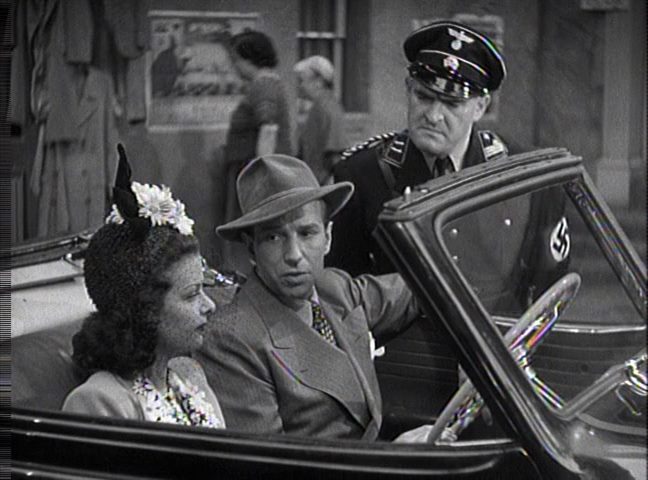
Francis Lederer plays Bennett’s Nazi husband. A matinee idol in Europe in the 20’s, Lederer had enjoyed a promising career as a romantic leading man in Hollywood in the 30’s. By the late 30’s, however, his film career was fizzling and he gradually eased into character parts. The advent of war had its part to play in this transition–Lederer found himself frequently playing Nazis.
Anna Sten plays the “other woman” of the film–a stodgy German hausfrau whom Bennett does not initially take seriously as a rival, until she recognizes how closely the other woman’s political views correspond to those of her husband. The casting of Anna Sten in this role displays a certain cleverness. Born in Russia in 1908, Sten began her acting career at the Moscow Art Theatre. She appeared in a number of Soviet films, including Pudovkin’s Storm Over Asia (1928), before moving to Germany. Sam Goldwyn brought her to Hollywood in the early 1930’s amid an intensive publicity campaign, hoping to create another Garbo or Dietrich. But she failed to appeal to American audiences and soon became known as “Goldwyn’s Folly.” From then on, she took only character roles and began a career as a painter. Sten seems to have been too foreign for the audiences of the time and it is precisely this quality that I Married a Nazi seizes upon for its own ends.
The most effective element of I Married a Nazi is the ease with which it evokes an atmosphere of claustrophobia, in which any word may be overheard and the wrong word can send one to a concentration camp. The film reflects American unease with a political system repugnant to its principles, a system it was slowly coming to recognize as a major threat to those principles.
Notes by Laurie McNeice

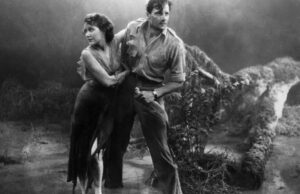
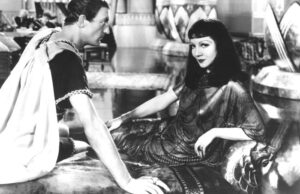
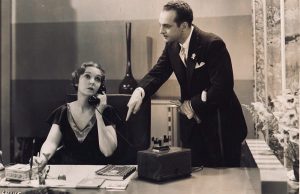






I wouldn’t exactly describe Anna Sten’s character as a “stodgy Hausfrau”; most stodgy Hausfraus whom I have met are neither committed ideologues or movie vamps. As a matter of fact Sten’s “Anna Heinkel” is not, excepting her transformation by the love of a good capitalist man, unlike Greta Garbo’s “Nina Ivanovna Yakushova” in “Ninotchka”—cold, hard, and fanatical, even if physically attractive—and Francis Lederer’s “Eric Hoffmann” has nowhere near the charm nor strength of character needed to convert her. In fact, her whole plot can be described as an “Anti-Ninotchka,” in which the fanatical Socialist female converts the easy-going capitalist male.
I agree. And a very good choice of actress for the role.